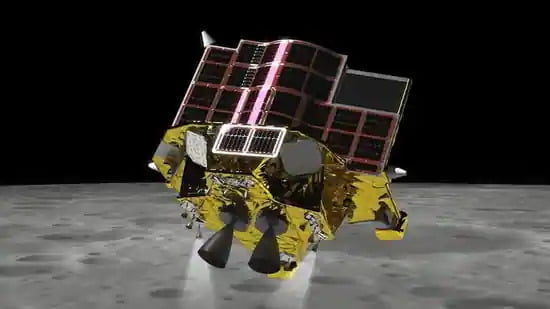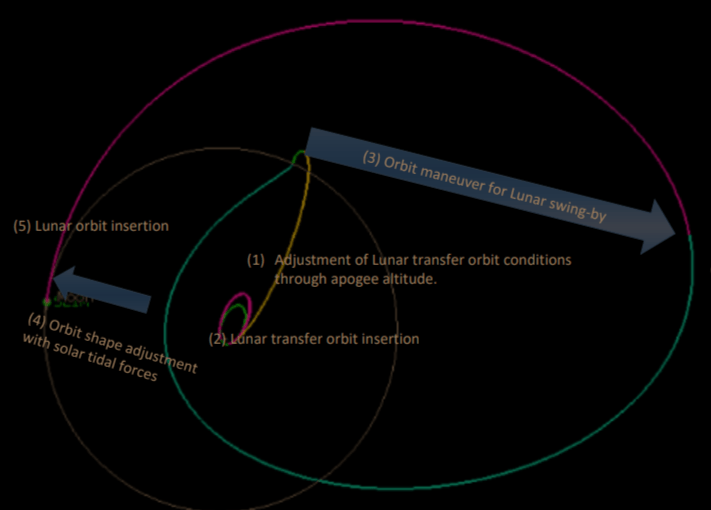Japan’s space agency JAXA launched SLIM (Smart Lander for Investigating Moon) on 7 September at 8:42 AM JST. This is the first soft and precise moon landing mission of Japan the scheduled launch method is called “rideshare,” and launched along with the scientific satellite “X-ray Imaging and Spectroscopy Mission” (XRISM) that is aimed to be placed in 550 km LEO it is x-ray telescope which will be used to study the universe. SLIM is expected to land on the lunar surface on 19 January 2024.

Mission objective of SLIM
The objective of this project is to contribute to future lunar and planetary exploration by achieving
the following two objectives.
(1) Demonstration of high-precision (pinpoint) landing technique on the Moon.
Aiming for a landing accuracy of 100 meters compared to several to tens of kilometers in traditional lunar landers. The main technologies include “vision-based navigation” and “navigation, guidance, and control.”
(2) Creating a lightweight system for lunar and planetary probes, enabling more frequent exploration missions to moons and planets.
It includes the design of a Small, lightweight, and high-performance chemical propulsion system and Reducing the weight of essential components within spacecraft, like computers and power supply systems.
Read also Chandrayaan 4: India and Japan getting ready for LUPEX
Facts of SLIM
SLIM will use its own propulsion system for its trajectory adjustment towards the Moon. As a result, it follows a trajectory design that minimizes propellant consumption. Consequently, it takes several months to reach the Moon. This mission cost around $100 million USD.
| Launching Rocket | H-2A |
| Launching Site | LA-Y1, Tanegashima Space Centre |
| Arrival in Lunar Orbit | 3 to 4 months after launch |
| Lunar Orbit | 1 month |
| Landing Descent | 4 to 6 months after launch |
| Landing Site | Shioli Crater (13.3 degrees S, 25.2 degrees E) |

Landing Sequence of SLIM
(1) Initiate lunar landing sequence from lunar orbit and demonstrate precise vision-based navigation for accurate positional estimation, incorporating guidance for pathfinding and control, ensuring the controlled approach to the target location above the lunar surface.
(2) From above the target site, the landing radar will be employed to accurately measure altitude and area-relative velocity, which will be integrated into the navigation and guidance system.
(3) During the final approach, autonomous image-based obstacle detection will be utilized to identify impediments, and measures will be taken to ensure a safe landing by avoiding hazardous boulders and other obstacles.
Read also Aditya L1: India’s 1st mission to Sun
Vision-based landing
The SLIM will be self-adjusted, achieving pinpoint landing accuracy through “vision-based navigation” to determine its position. In obtaining “vision-based navigation,” preprocessing time plays a crucial role. The current space-grade CPU’s capability is only 1/100th compared to substances used on Earth. Hence, JAXA has developed image processing algorithms tailored for space-worthy FPGAs. This enables the achievement of vision-based navigation in a matter of seconds.
Two-step landing
Due to the proximity of the landing site to a crater, the terrain around it has an incline of about 15 degrees. This makes it crucial to have a method for safely landing on such a slope.
As our scientific and exploration goals become more advanced, there will be a growing need to land on such sloped surfaces in the future. Particularly for spacecraft similar in size to SLIM, a technique called the “two-step landing method” has been proven to deliver reliable and successful landing outcomes through computer simulations. In this approach, the spacecraft’s main landing gear makes initial contact with the ground, followed by a forward rotation to establish stability.
Mission after landing
After a successful touchdown, our mission’s objective is to uncover the Moon’s beginnings. This will be accomplished by analyzing the composition of rocks believed to come from the lunar mantle, employing a specialized “multi-band spectral camera.”
To achieve this, it’s crucial to descend to the vicinity of the targeted crater on the lunar surface. Enabling precise observations that can only be fully accomplished through pinpoint landing, meeting the criteria of “additional success” benchmarks. This observation is encompassed within the criteria for “extra success.”
Moreover, SLIM carries two probes that come with the following capabilities:
- Keeping track of the mission’s status post-landing
- Capturing images of the landing site from an external perspective (still images)
- Having a separate communication system for direct communication with Earth
Future of SLIM
“SLIM” serves as a technology demonstrator, and the knowledge acquired in precise landing and other technological advancements will be passed on to upcoming missions like the Martian Moon exploration (MMX) and missions focused on lunar polar exploration.
SLIM technology will also be utilized in the LUPEX Mission, a lunar landing mission jointly conducted by ISRO and JAXA around 2026.
Read also LUPEX Mission: ISRO and JAXA join forces for LUNAR Exploration Mission

